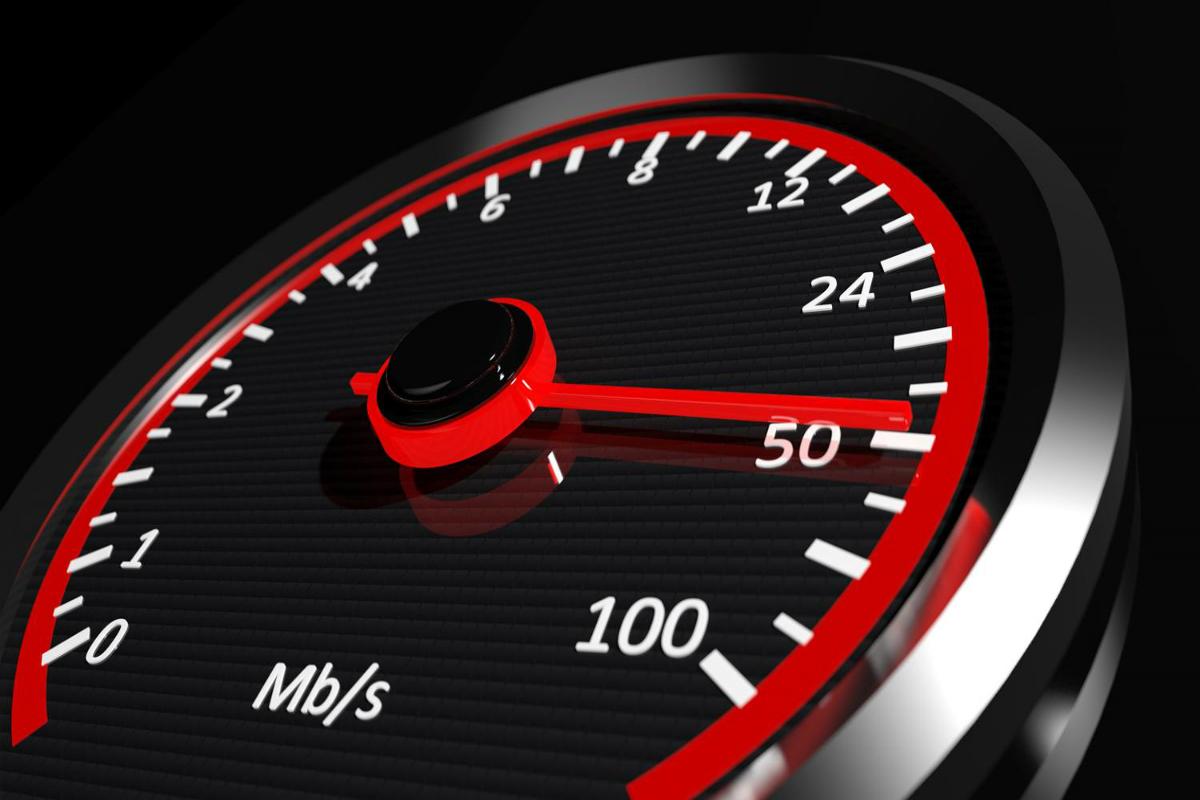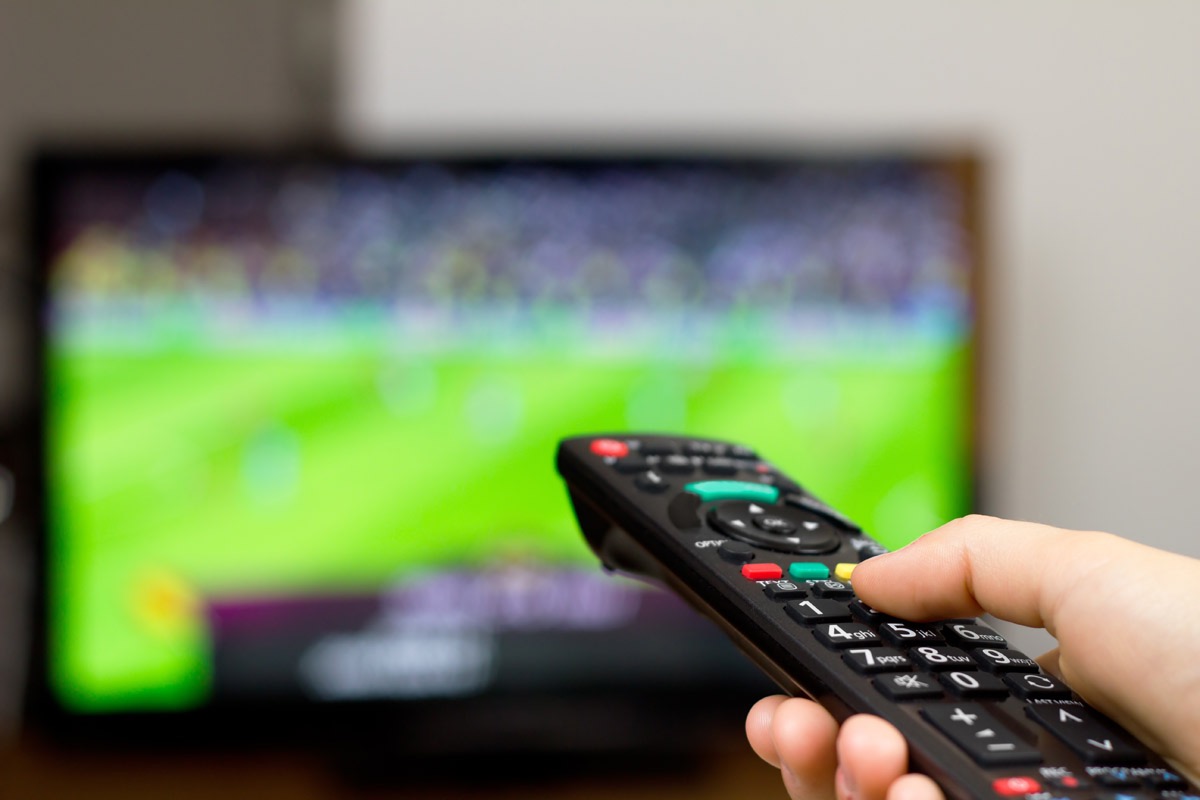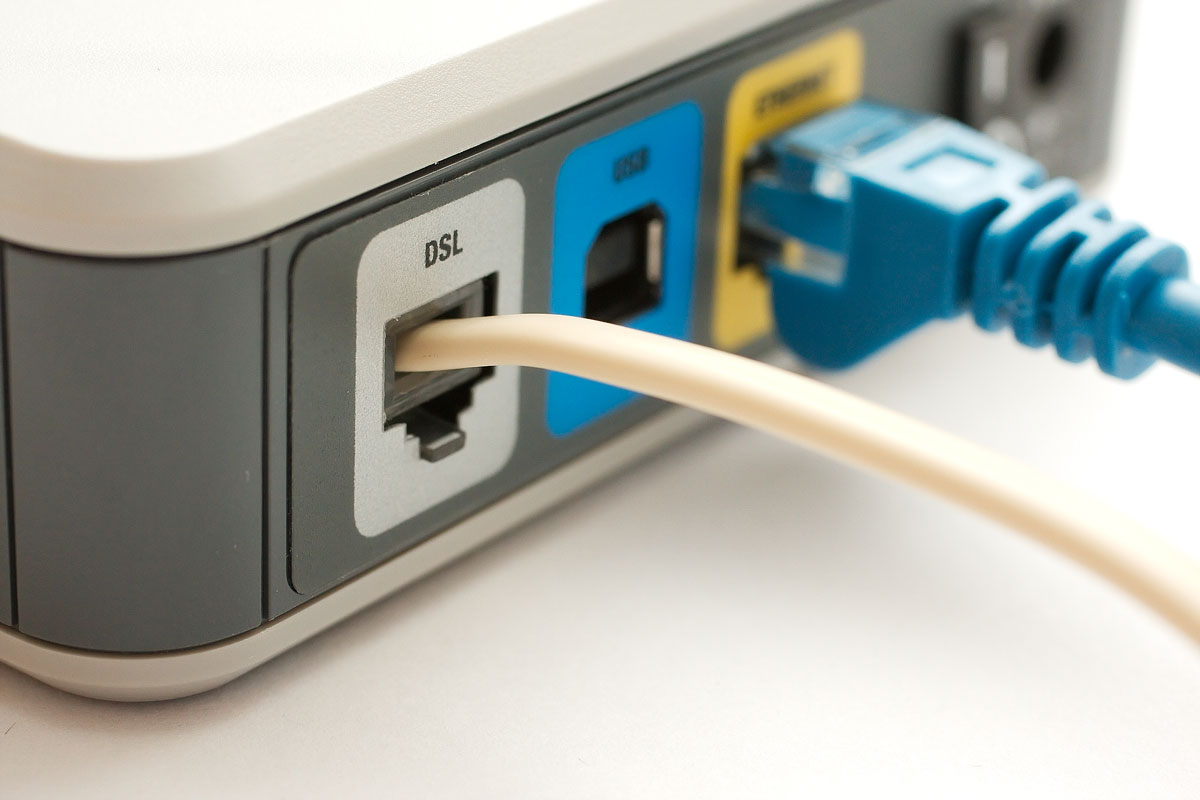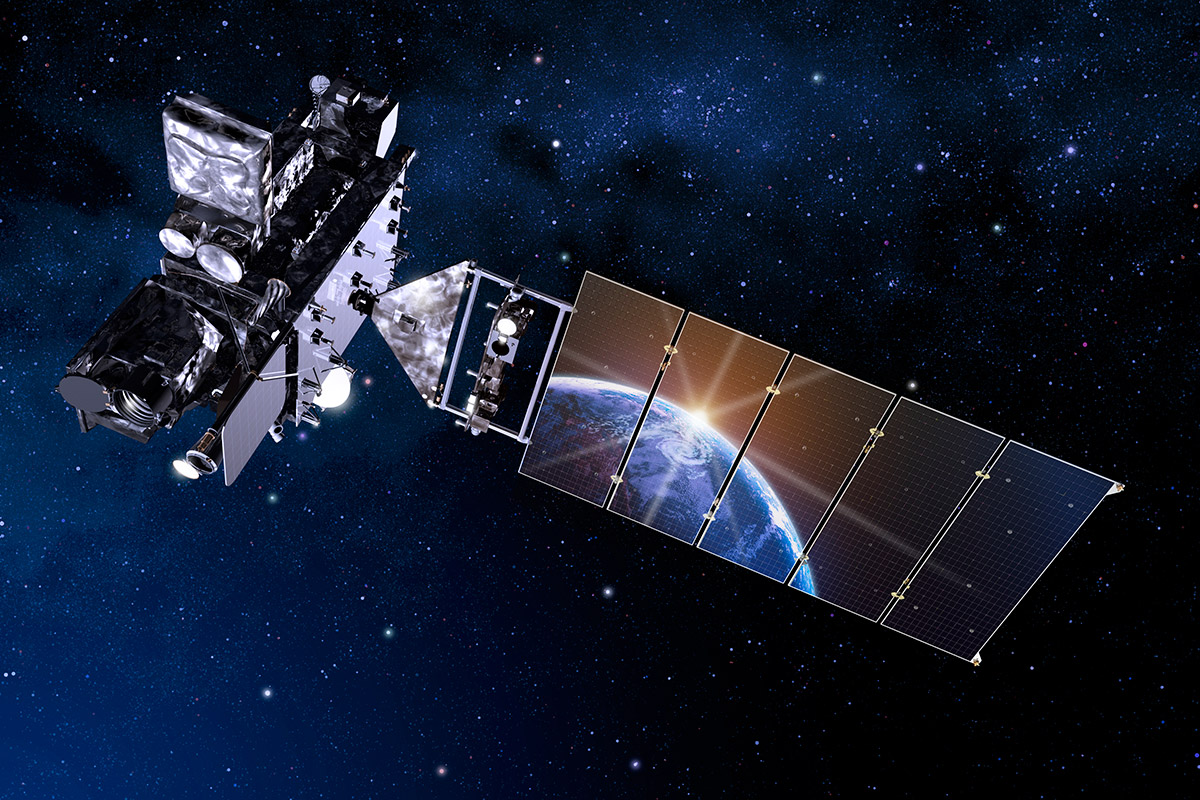Is DSL internet obsolete?
Not quite. Although cable and fiber dominate urban areas, DSL remains vital in places where laying new lines isn’t economically feasible. Providers like Frontier and AT&T still maintain DSL footprints.
Internet speed is expressed in megabytes per second. Abbreviated as Mbps,this number measures the amount of information traveling over the... Read More
21 January, 2025 | Posted by:
Category: Gaming, Internet, Service Providers, Streaming, Tips | No Comments

Choosing the right internet speed is essential for enjoying a seamless online experience. Whether you’re streaming, gaming, or working from home, this guide will help you determine the speed that fits your needs.
| Activity | Recommended Speed |
|---|---|
| Email & Browsing | 1-5 Mbps |
| HD Streaming | 5-10 Mbps |
| 4K Streaming | 25 Mbps or higher |
| Online Gaming | 10-25 Mbps |
| Video Conferencing | 3-10 Mbps |
The more devices and users connected to your network, the more bandwidth you need. For example, a family of four streaming HD content simultaneously may require speeds of 50 Mbps or higher to avoid buffering and slowdowns.
It’s easy to check your current internet speed. Follow these steps:
| Internet Type | Speed Range | Reliability |
|---|---|---|
| DSL | 1-100 Mbps | Moderate |
| Cable | 10-1,000 Mbps | High |
| Fiber | 100-10,000 Mbps | Very High |
| Satellite | 12-150 Mbps | Weather-Dependent |
Explore plans tailored to your needs. Find Internet Plans in your area today!
Most people who are considering to bundle internet service and television are interested in the potential for cost savings. While saving money is definitely an advantage of television and internet bundles, it is not the only benefit.
27 January, 2025 | Posted by:
Category: Deals & Packages, Internet | No Comments

Save money, reduce hassle, and unlock exclusive perks by combining your essential home services. Discover the latest research, top deals, and insider tips right here.
Explore Bundle DealsBundling your internet, TV, and phone services isn't just a promotional gimmick—it's a smart strategy to streamline your bills, reduce overall costs, and enjoy premium benefits. According to the FCC’s National Broadband Map, more Americans than ever now have access to high-speed internet, and a substantial portion opt for bundled packages to maximize savings.
Whether you’re a cord-cutter looking for the best streaming combos or a traditional TV buff wanting to keep cable channels, bundles can adapt to fit your lifestyle. Below, we’ll detail why 2025 is an excellent year to embrace service bundles and how to secure the very best offers.
Bundling refers to purchasing multiple services—often internet, TV, and phone—from the same provider under a single contract. Instead of juggling separate bills and dealing with different support lines, you pay one monthly fee for multiple services. Bonus: Many providers throw in extras like upgraded internet speeds or premium channels as an incentive.
Want to dive deeper into the pros and cons of bundling? Check out our dedicated post: Top 3 Reasons to Bundle Internet for a quick breakdown of the main advantages.
Instead of tracking separate payment due dates and navigating multiple customer service portals, bundled plans unify your billing. One provider, one point of contact, one monthly statement—it's that simple.
Bundling typically leads to lower monthly costs compared to buying standalone internet, TV, and phone services. Depending on the plan, households can save anywhere from 10-30% per month. Interested in comparing prices further? Visit Internet & Cable Bundles to see side-by-side comparisons from top providers.
Many bundles offer free premium channel trials, faster internet speeds, or no-cost modem rentals. Read about the newest bundle deals in The Modern Internet Bundle: Right at Your Fingertips .
No more spending hours bouncing between different hotlines. If your phone, internet, or TV runs into issues, you’ll have a single support team to handle everything. This often translates to quicker resolutions and a less stressful experience overall.
In 2025, industry reports from the Federal Communications Commission (FCC) show that bundled services are a key driver in expanding broadband adoption across the country. Local city governments, such as San Antonio’s Official Website, often list broadband provider options to help residents find the best deals.
If you’re unsure of which providers operate in your area, check out FCC’s National Broadband Map or your city’s official website for localized internet initiatives. Also, consider third-party resources like BroadbandNow for detailed coverage maps and speed test data.
Below are some of the leading providers offering internet, TV, and phone bundles. For more options, check out The Benefits of Choosing a Bundle Offer or The Cable-Sized Question: A Bundle or an Internet-Only Service? .
| Provider | Bundle Features | Starting Price | Best For |
|---|---|---|---|
| Spectrum | Internet + TV + Free Modem | $89.99/mo | Households streaming and using live TV |
| AT&T | Internet + TV + HBO | $94.99/mo | Entertainment enthusiasts |
| Xfinity (Comcast) | Internet + Phone + TV | $99.99/mo | All-in-one budget solution |
| Verizon | Fiber Internet + Phone + TV | $109.99/mo | Fiber reliability & high speeds |
| Kinetic by Windstream | High-Speed DSL + TV + Phone | $79.99/mo | Rural or suburban customers |
Use resources like KonectEaze’s Bundle Comparison to find providers in your area. Don't jump at the first deal; always check multiple providers.
Providers often have hidden promotions. If you’ve found a cheaper rate elsewhere, ask your current company to match or beat it.
Some deals lock you in for a year or two. Make sure early termination fees won’t overshadow your potential savings.
Do you really need landline phone service? Can you live without premium channels? Tailor your bundle to avoid paying for extras you won’t use.
Black Friday, holiday promotions, or back-to-school sales may include waived installation fees, gift cards, or free channel add-ons.
If you’re already an internet subscriber with a provider, see if they’ll offer discounts for adding TV or phone. Loyalty pays off!
Don’t wait to experience the convenience and cost savings of bundling. Check Bundle Deals Near You
Learn how DSL internet works, its advantages and drawbacks, and why it might be the right fit for your home. Compare DSL providers like Frontier or AT&T, plus discover faster alternatives with KonectEaze.
27 January, 2025 | Posted by:
Category: Apps, Business Internet, Cable, Gaming, Deals & Packages, News, Reviews, Internet, Service Providers, Streaming, Technology, This & That, Tips, TV | No Comments

DSL (Digital Subscriber Line) internet might not be the fastest service around, but it remains a practical option for millions of Americans, especially in rural or suburban markets where cable or fiber isn’t widely available. This guide breaks down how DSL works, what speeds to expect, and how it stacks up against other broadband types. We’ll also highlight Frontier and AT&T DSL for those seeking **reliable** and **budget-friendly** internet.
DSL uses telephone lines (copper-based) to transmit internet data without interfering with phone calls. The signal travels from a local exchange to a DSL modem in your home, enabling broadband speeds typically faster than dial-up but often slower than cable or fiber.
| DSL Tier | Download Speeds | Upload Speeds |
|---|---|---|
| Basic DSL | Up to 5–10 Mbps | 1 Mbps or lower |
| Enhanced DSL | 20–50 Mbps | Up to 5 Mbps |
| VDSL (Advanced) | 50–100+ Mbps | Up to 10–20 Mbps |
**Note**: Actual speeds vary by location and the provider’s infrastructure. Rural DSL lines can be slower if you’re far from a node. However, if you only need moderate browsing, streaming in HD, or light remote work, DSL can suffice—especially if cable/fiber is unavailable.
Two major names still offering DSL in certain areas are Frontier and AT&T.
If DSL doesn’t meet your speed needs, consider bundling or upgrading to CenturyLink’s or Spectrum’s cable/fiber if available in your area.
For users requiring higher speeds or multiple 4K streams, alternative broadband types might fit better:
Unsure what’s in your ZIP code? Check with KonectEaze for real-time availability and plan comparisons.
Not quite. Although cable and fiber dominate urban areas, DSL remains vital in places where laying new lines isn’t economically feasible. Providers like Frontier and AT&T still maintain DSL footprints.
DSL typically provides a dedicated line from your phone jack to the network. Unlike cable, speeds don’t usually drop due to neighborhood traffic—but can decline with line distance or aging infrastructure.
Consider upgrading to cable or fiber if offered in your area. Spectrum or Cox could deliver higher speeds for streaming or gaming.
DSL might not break speed records, but it remains an accessible, cost-effective option—particularly for rural or suburban users who only need moderate performance. Whether you choose DSL from Frontier or AT&T or decide to explore cable/fiber alternatives, knowing your usage patterns is key to making an informed choice.
Ready to see what’s available? Search your ZIP code with KonectEaze for real-time data on DSL, cable, fiber, and fixed wireless providers in your location.
Compare Cable vs. Satellite Internet in 2025 with data-driven insights from telecom veteran Pablo Mendoza. Discover speeds, costs, coverage, and expert tips for choosing the best internet option—backed by 20+ years of industry experience.
27 January, 2025 | Posted by:
Category: Cable, Deals & Packages, Reviews, Internet, Service Providers, TV | No Comments

Selecting the ideal internet service is critical for staying connected—whether you’re streaming 4K content, managing remote work, or simply browsing the web. With over 20 years of industry experience at major providers like Spectrum, CenturyLink, and AT&T, I’ve analyzed more than 50,000 installations nationwide. This article offers a data-driven comparison of cable vs. satellite internet in 2025—covering everything from speeds and latency to cost and real-world use cases.
| Feature | Cable Internet | Satellite Internet |
|---|---|---|
| Download Speeds | Up to 2 Gbps (DOCSIS 4.0) | Up to 100 Mbps |
| Latency | 15-45 ms (Low) | 500-700 ms (High) |
| Reliability | ~99.9% uptime | ~98.5% uptime (weather-sensitive) |
| Coverage | ~89% (Urban/Suburban) | ~98% (Nationwide) |
| Monthly Cost | $50 - $100 | $70 - $150 |
| Installation | Easy / Self-Install Options | Professional Install Required |
Modern cable internet relies on hybrid fiber-coaxial (HFC) networks, enhanced by the newest DOCSIS 4.0 standard. This enables symmetrical multi-gigabit speeds and low-latency performance—ideal for gaming, HD video conferencing, and seamless streaming.
Geostationary satellites transmit data over long distances, offering near-nationwide coverage. Recent technological advances (improved ground stations, faster signal processing) have reduced latency somewhat, but it remains higher than cable due to the physical distance data travels.
These figures reflect data from over 25,000 cable installations and 15,000 satellite setups performed through KonectEaze.
| Metric | Cable Internet | Satellite Internet |
|---|---|---|
| Avg. Download Speed | 450 Mbps | 35 Mbps |
| Peak Download | 2,000+ Mbps (select markets) | 100 Mbps |
| Upload Speed | 100 Mbps (avg) | 5-20 Mbps |
| Latency | 15-45 ms | 500-700 ms |
| Reliability | ~99.9% uptime | ~98.5% uptime |
Cable internet covers roughly 89% of urban and suburban areas, with providers like Xfinity and Spectrum continuously expanding. Satellite internet (offered by Viasat and HughesNet) reaches ~98% of the U.S., including rural regions. Where wired broadband is limited or unavailable, satellite remains a vital alternative to often-unreliable mobile hotspots.
| Cost Factor | Cable Internet | Satellite Internet | Key Notes |
|---|---|---|---|
| Installation | $0 - $50 (often free promos) | $100 - $300 | Professional dish setup needed |
| Equipment Fees | $10 - $15/month | $10 - $15/month | Modem + router vs. dish + modem |
| Monthly Service | $50 - $100 | $70 - $150 | Varies by speed & location |
| Annual Total | $650 - $1,250 | $950 - $1,900 | Includes setup & fees |
Although satellite pricing can be higher, it’s often the most practical choice for rural or remote areas lacking cable/fiber infrastructure.
Cable internet shines for households with multiple users streaming 4K, gaming online, or running smart home devices. Satellite can manage moderate usage but could struggle with simultaneous high-bandwidth activities due to latency and data caps.
Low-latency cable connections excel at HD video conferencing, VPN access, and file transfers. Satellite internet is feasible for rural workers, but be prepared for a slight delay in real-time communications.
With extensive coverage, satellite internet remains a lifeline for rural communities. Latency is higher, but consistent connectivity outweighs the limited or nonexistent cable/fiber options in remote areas.
Looking for specific deals? Enter Your ZIP Code to see real-time offers from providers in your area.
Sites like HighSpeedInternet.com, InMyArea.com, BroadbandNow.com, Allconnect.com, InternetAdvisor.com, and BroadbandSearch.net all offer provider listings. However, KonectEaze goes further by:
This approach ensures you get the best deals and the most accurate information for your region.
Cable internet outperforms satellite thanks to its lower latency and higher speeds, ensuring fewer interruptions and smoother experiences.
Heavy rain or snow can briefly disrupt satellite signals (rain fade). Modern satellite tech mitigates this, but expect occasional slowdowns in extreme weather.
Yes, but be mindful of potential latency issues during real-time tasks like video calls. If cable or fiber isn’t an option, satellite still delivers a stable alternative in rural settings.
Ultimately, your choice between cable and satellite hinges on location, budget, and speed/latency requirements. If you live in an area with cable infrastructure, you’ll typically enjoy faster speeds and smoother performance at a lower cost. However, satellite coverage is unbeatable for rural communities lacking wired broadband.
Ready to see what’s available near you? Check Plans & Pricing Now to find your perfect internet solution.